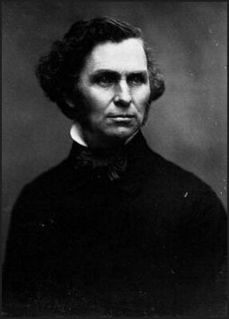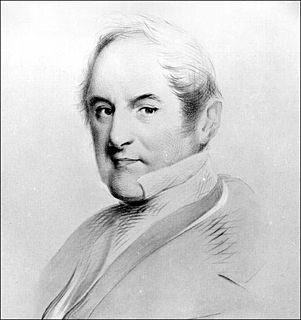Related Research Articles

The Maine Law, passed on June 2, 1851 in Maine, was the first statutory implementation of the developing temperance movement in the United States.

Each General Assembly of the legislature of the province of Nova Scotia, Canada, consists of one or more sessions and comes to an end upon dissolution and an ensuing general election. Today, the unicameral legislature is made up of two elements: the Lieutenant Governor and a legislative assembly called the House of Assembly. The legislature was first established in 1758.

Lieutenant-General Sir John Harvey, was a British Army officer and a lieutenant governor.

George Law Curry was a predominant American political figure and newspaper publisher in the region that eventually became the state of Oregon. A native of Pennsylvania, he published a newspaper in St. Louis, Missouri, before traveling the Oregon Trail to the unorganized Oregon Country. A Democrat, Curry served in the new Oregon Territory's government as a representative to the legislature and as Territorial Secretary before appointment as the last Governor of the Oregon Territory. Curry County in Southern Oregon is named in his honor.
Sir Robert Hodgson was a Canadian lawyer, politician, judge, and the second Lieutenant Governor of Prince Edward Island.

Oregon's Territorial Legislature was a bicameral legislative body created by the United States Congress in 1848 as the legislative branch of the government of the Oregon Territory. The upper chamber Council and lower chamber House of Representatives first met in July 1849; they served as the region's legislative body until Oregon became a state in February 1859, when they were replaced by the bicameral Oregon State Legislature.
The 12th General Assembly of Nova Scotia represented Nova Scotia between 1820 and 1826.
The 23rd General Assembly of Nova Scotia represented Nova Scotia between 1864 and 1867.
The 22nd General Assembly of Nova Scotia represented Nova Scotia between 1859 and 1863.
The 20th General Assembly of Nova Scotia represented Nova Scotia between 1855 and 1859.

Thomas Cochran or Cochrane was an Irish-born merchant and political figure in Nova Scotia. He represented Liverpool Township in the Nova Scotia House of Assembly from 1775 to 1785.

The Legislative Council of Nova Scotia was the upper house of the legislature of the Canadian province of Nova Scotia. It existed from 1838 to May 31, 1928. From the establishment of responsible government in 1848, members were appointed by the Lieutenant Governor of Nova Scotia on the advice of the Premier.
James Crowdy was an English-born official in Newfoundland. He was Speaker of the House of Assembly of Newfoundland and Labrador from 1843-48.
The 1852 and 1853 United States Senate elections were elections which had the Democratic Party gain two seats in the United States Senate, and which coincided with the 1852 presidential election. Only six of the twenty senators up for election were re-elected.
The 1850 and 1851 United States Senate elections were elections which had the Democratic Party lose seats, but retain a majority in the United States Senate.
The 1856 and 1857 United States Senate elections were elections which had the young Republican Party assume its position as one of the United States's two main political parties. The Whigs and Free Soilers were gone by the time the next Congress began.
The 1854 and 1855 United States Senate elections were elections which saw the final decline of the Whig Party and the maintained majority of the Democrats. Those Whigs in the South who were opposed to secession ran on the "Opposition Party" ticket, and were elected to a minority. Along with the Whigs, the Senate roster also included Free Soilers, Know Nothings, and a new party: the Republicans. Only five of the twenty-one senators up for election were re-elected.
The President pro tempore of the Vermont Senate presides over the Senate of the U.S. state of Vermont in the absence of the Lieutenant Governor. The President pro tempore also sets the policy priorities and legislative agenda for the Senate.